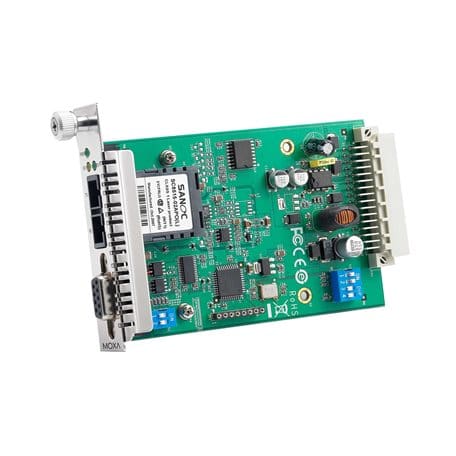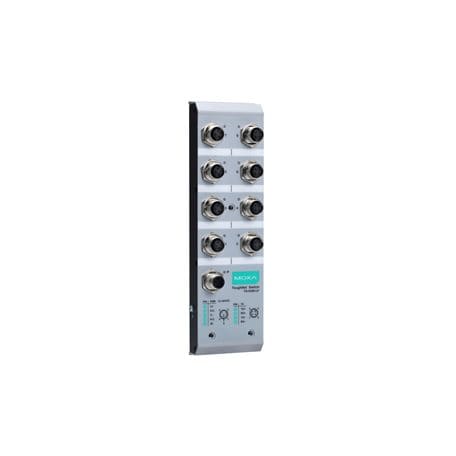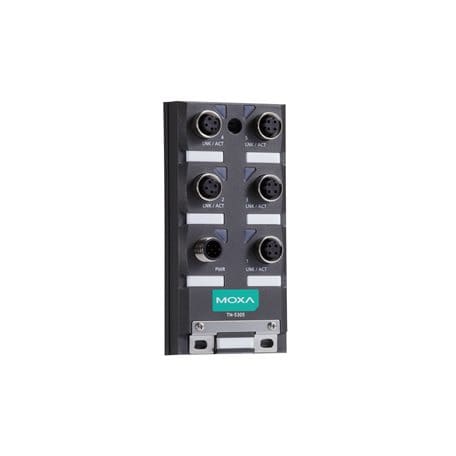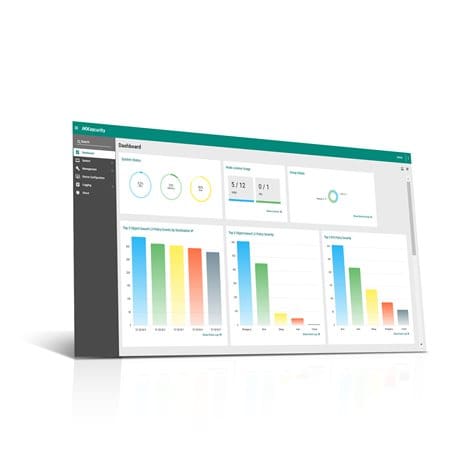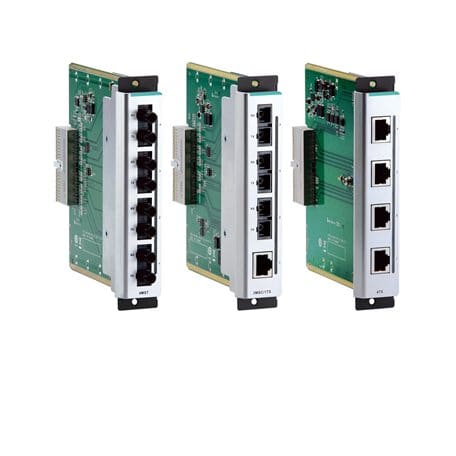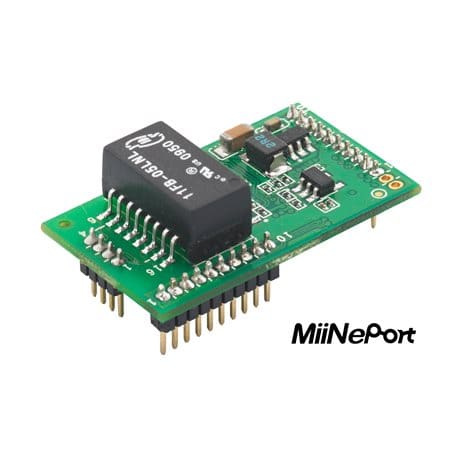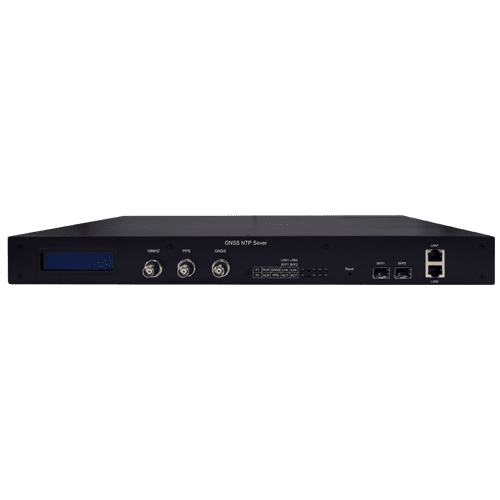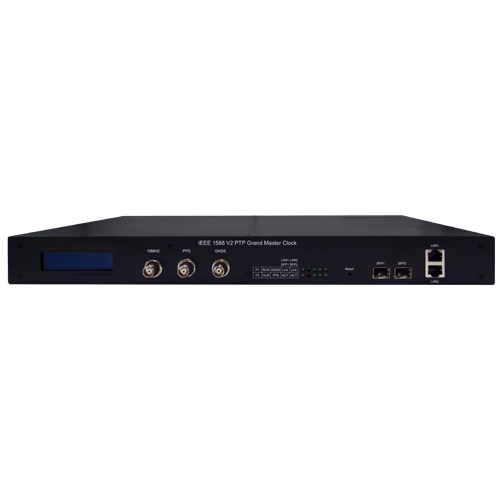
NTS7500-PTP Series
- High precision GNSS module
- Stratum 1 NTP Server, with Optional PTP hardware-support
- PTP Version supports IEEE61850-9-3 and IEEEC37.238 Power Profiles
- Holdover <30 ns/second time-drift when disconnected from GNSS
- IEC62439-3 Clause 5 Parallel Redundancy Protocol (PRP)
- Industrial fanless design for -40 to +85°C operation
- Flexible modular configuration; 2 dedicated Output Module slots
- 2 x 10/100/1000 Mbps RJ45 and 2 x 100/1000 Mbps Combo SFP slots
- Embedded NTP/SNTP client and NTP server
- Support for Legacy Protocols: IRIG-B, BJT, BCD, ST, ST with checksum
- Redundant power input; low-Voltage DC or high-Voltage AC/D
A Powerful base for NTP and PTP
The NTS7500 1U 19’’ Rack-mount Modular NTP Server with additional Grandmaster Clock feature is a high-powered rugged device that offers good precision and reliability. Suitable for almost any environment and complying with the harshest Industrial EMC conditions, ATOP’s device satisfies all ndustry requirements for Industrial-grade networking timing applications. Its modular architecture provides power-input redundancy and up to 16 different outputs for legacy time Protocols – such as IRIG-B, BCD, ST, ST with checksum.
Stratum 1 NTP Server: NTS7500 embeds a high precision, multi-system GNSS module that supports GPS, GLONASS, BEIDOU and GALILEO GNSS Systems for redundancy. When disconnected from a GNSS time source, its integrated TCXO Oscillator, ensures time drift (1PPS output) does not exceed 30 ppb matching and exceeding the requirements for Power Substations. NTS7500 supports NTPv1/v2/v3/v4 Server and NTP/SNTP Client.
Optional PTP Standard Support: NTS7500 supports Layer-2 and Layer-3 over IPv4 transport; VLAN Tagging; and Multicast, Unicast and Unicast Negotiation in both End-to-End and Peer-to-Peer delay calculation modes. NTS7500 fully supports IEEE C37.238-2017 and IEEE/IEC 61850-9-3 – 2016 Power Profiles.
Industrial and Substation Hardware : Designed to satisfy EMC requirements for Substation-Grade equipment, NTS7500 is designed to function between -40°C and 85°C with passive cooling only, allowing it to avoid the risk of having moving parts breakdown from constant operations. Also, its powerful CPU supports up to 2,000 packets per second, allowing endless applications and a large number of slaves to be supported simultaneously. Redundancy through IEC62439-3 Clause 5 PRP.
Proven design: No standardized testing procedure for PTP devices exists. So ATOP tests its products yearly in ISPCS Plugfests to demonstrate their reliability. NTS7500 was successfully tested in Stockholm 2016, Monterey 2017, Geneva 2018 and Portland 2019. More information available on www.ispcs.org.
APPLICATION CASE
IEEE1588v2 Precision Time Protocol
PTP is the only protocol that allows network time synchronization in the nanosecond-range. Current networking protocols nor legacy protocols allow such a timestamp resolution. IEEE1588-2008 (v2) derives from an earlier version issued by IEEE in 2002 that is not backward compatible. Being so exact about timestamp resolution and timekeeping, IEEE1588v2 timestamps are required to be hardware-generated, since no software could keep up with some stringent requirements, no matter the processing power. PTP is a hierarchical protocol, in which Grandmaster Clocks are directly synchronized with reference clocks such as GNSS or Atomic Clocks, with subsequent layers reaching slaves devices. PTP packets are timestamped with a nanosecond resolution.
To achieve such accuracy, PTP works best on Local Area Networks without passing through the internet: latencies and paths would introduce variables latencies that couldn’t be accommodated for in the accumulated delay calculations. PTP packets should always travel the same path during each synchronization phase to preserve such high accuracy. PTP is designed to work on Ethernet transport, Layer-2 (Data-link Layer) or Layer-3 IPv4. And there are two methods to calculate link delay: in End-to-End mode, link delay is calculated from the source of the PTP packet until its destination, while in Peer-to-Peer mode, link delay is calculated as between each network node. In addition, PTP is Internet-capable, with IPv4 in unicast and unicast negotiation modes.
Application example
This network diagram shows the use of ATOP’s NTS7500 in a substation environment. The GMC is usually located in the office building adjacent to the substation. On one side, it is connected to the GNSS Antenna, with the other side being the Substation backbone connection. Every switch connected to the Grandmaster should be able to handle all Precision time Protocols by hardware, in order not to affect the synchronization quality. Packets are delivered downstream through Boundary or Transparent clocks, where they’ll reach PTP slaves – such as substation IEDs.
PRODUCTS IN THIS SERIES
PTP Grandmaster/NTP Stratum 1 Modular clock, Multi-GNSS, SyncE, 2 Gigabit RJ45-SFP combo
Other Series
Accessories
Utility
| Version | Name | Time | Size | Download |
|---|---|---|---|---|
| v5.60 | Management Utility for Windows | 2021-01-18 | 23.65 MB | Download |
| v5.20 | Management Utility for Windows | 2019-09-09 | 16.21 MB | Download |
Firmware
| Version | Name | Time | Size | Download |
|---|---|---|---|---|
| v6.18 | NTS7500-PTP_Firmware | 2021-02-22 | 11.55 MB | Download |
| v6.15 | NTS7500-PTP_Firmware | 2020-10-07 | 11.43 MB | Download |
Datasheet
| Version | Name | Time | Size | Download |
|---|---|---|---|---|
| v1.7 | Datasheet EN | 2023-11-01 | 614.26 KB | Download |
| v1.6 | Datasheet EN | 2021-09-13 | 831.61 KB | Download |
| v1.4 | Datasheet EN | 2021-03-10 | 1.02 MB | Download |
| v1.3 | Datasheet EN | 2020-12-22 | 1.02 MB | Download |
| v1.2 | Datasheet EN | 2020-08-25 | 1.02 MB | Download |
| v1.1 | Datasheet EN | 2020-08-18 | 1.02 MB | Download |
| v1.0 | Datasheet EN | 2020-07-24 | 1.02 MB | Download |
| v0.9 | Datasheet EN | 2020-06-17 | 1.02 MB | Download |
| v0.8 | Datasheet EN | 2020-04-20 | 1.02 MB | Download |
| v0.7 | Datasheet EN | 2020-03-12 | 1.02 MB | Download |
| v0.6 | Datasheet EN | 2020-02-04 | 1.02 MB | Download |
| v0.5 | Datasheet EN | 2019-12-16 | 908.43 KB | Download |
| v0.4 | Datasheet EN | 2019-12-12 | 905.66 KB | Download |
| v0.3 | Datasheet EN | 2019-10-31 | 617.09 KB | Download |
| v0.2 | Datasheet EN | 2019-09-09 | 692.75 KB | Download |
Manual
| Version | Name | Time | Size | Download |
|---|---|---|---|---|
| v0.7 | NTS7X00 User Manual | 2021-06-07 | 899.72 KB | Download |
| v0.5 | NTS7X00 User Manual | 2020-07-24 | 1.37 MB | Download |
| v0.4 | NTS7X00 User Manual | 2019-09-09 | 1.46 MB | Download |
Hardware Installation Guide
| Version | Name | Time | Size | Download |
|---|---|---|---|---|
| v1.0 | NTS7500 Series Hardware Installation Guide | 2019-11-05 | 3.89 MB | Download |


